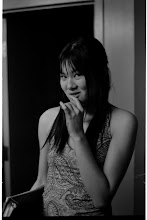Beijing I: Great Wall
August 12th, 2007
I entered Beijing the second time almost as ignominiously as I did the first (shrunken, swollen, and sobbing). I had only managed to obtain a hard seat for my overnight train ride when I bought my tickets, but as a result of trying to avoid the long semi-queue to get on the train, I managed to avoid my train entirely. I was able to transfer to the next train that night at no cost except my hard seat. Great. 12 hours of sleeping on the floor of the smoke-filled spit-covered space between compartments.
Fortunately, I got put on the same train as my friend Charles, whom I had met the night before in the hostel bathroom. In an act of valiance dubbed as xue Leifeng by the Chinese passengers next to us, Charles gave me his seat (Salut Charles! Si tu lis cela maintenant, merci beaucoup! Je t'embrasse!). Some time in the morning, Charles got his seat back as a result of someone else vacating theirs.
August 14th, 2007
My friends Nicolas and Pierre arrived that morning. Nico had read on his friend's blog about how the friend got to see a wild part of the Great Wall sans the commercial clatter of Badaling, Simatai, or Mutianyu over in Huairou. Problem is, his friend didn't really detail how he got there, but we decided to go to Huairou and ask around there. Being the adventurous type (Aren't we all more daring in another country?), the 4 of us hopped on a bus and hoped for the best.
The second we got off the best, we were accosted by a mob of Mandarin speaking solicitors. Interestingly enough, they followed me as opposed to the French boys, probably because they (the solicitors) spoke only Chinese. In the end, we arranged for one guy (le conard) to take us to an obscure part of the wall where there would be nobody else.
The drive took over an hour up the winding mountain path. When we got there, the guy demanded more money to wait for us to go explore and to take us back afterward. The final price was 40 yuan each, not too expensive, I suppose, considering the entry fees for the more frequented parts of the wall cost about that much.
Pictures as follows:


